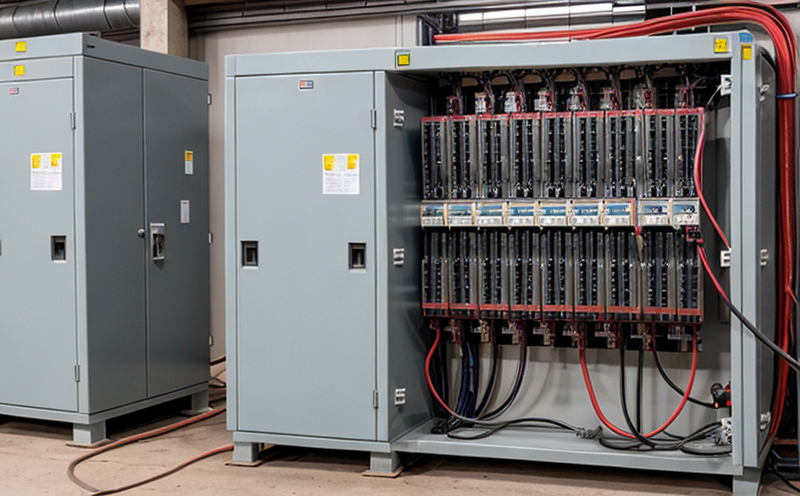IEC 62271-200 Metal-Enclosed Switchgear Type Testing
The IEC 62271-200 standard is a crucial framework for ensuring the safety and reliability of metal-enclosed switchgear used in power distribution systems. This standard provides guidelines to ensure that the electrical, mechanical, and functional aspects of the switchgear meet rigorous international standards. In this service, we conduct type testing on metal-enclosed switchgear according to the requirements specified by IEC 62271-200.
Our testing process begins with a comprehensive review of the design and specifications provided by our clients. This step ensures that all necessary parameters are accounted for, including load characteristics, insulation levels, and other critical features. We then proceed to perform tests on prototypes or pre-production units using state-of-the-art test equipment.
One of the key aspects of this testing is the high-voltage electrical performance tests. These include withstand voltage tests, which check the ability of the switchgear to withstand overvoltages without damage. We also conduct short-circuit current tests to ensure that the device can handle fault conditions safely and reliably.
Mechanical strength verification is another critical component of our testing process. This involves assessing the mechanical integrity of the switchgear under various operating conditions, including dynamic loads and thermal stresses. Additionally, we examine the durability and reliability of all components through accelerated aging tests and endurance tests.
The functional performance assessment ensures that the switchgear operates correctly in its intended application. This includes checking for correct operation during switching operations, monitoring for any signs of wear or degradation over time, and verifying adherence to operational limits set by IEC 62271-200.
Our testing facilities are equipped with the latest technology to ensure accurate and repeatable results. We use sophisticated measurement instruments such as high-voltage generators, insulation testers, and data acquisition systems to gather precise measurements during each test cycle.
The final step in our process is reporting the findings of the tests. Our reports provide detailed insights into the performance characteristics of the switchgear, highlighting any areas where improvements can be made. These reports are essential for ensuring compliance with IEC 62271-200 and other relevant international standards.
- Ensure that all electrical parameters meet specified limits as per the standard
- Check mechanical integrity under various operating conditions
- Verify correct operation during switching operations
- Evaluate insulation levels and withstand voltage capabilities
- Assess dynamic loads and thermal stresses on components
Scope and Methodology
The scope of our IEC 62271-200 testing service includes a comprehensive range of tests designed to validate the compliance of metal-enclosed switchgear with international standards. The methodology employed ensures that all aspects of the switchgear are thoroughly examined, from initial design reviews through final performance assessments.
Initial Design Review: We begin by reviewing the technical documentation provided by our clients. This includes detailed drawings and specifications to ensure that all components and configurations comply with IEC 62271-200 requirements. During this phase, we also consult relevant sections of other standards such as EN 50295 if applicable.
Prototype Testing: Once the design is approved, prototype units undergo rigorous testing in our laboratory environment. This involves performing high-voltage electrical tests to assess insulation integrity and withstand voltage capabilities. Mechanical strength verification is conducted using specialized machines capable of simulating real-world conditions experienced by switchgear during installation and operation.
Functional Performance Assessment: After successful completion of prototype tests, we move on to functional performance assessments which involve operating the switchgear under simulated working conditions. This allows us to observe its behavior over time while subjecting it to various stressors like thermal cycling and moisture exposure.
Data Analysis & Reporting: Following each test cycle, detailed data are collected and analyzed using advanced software tools. The results are compiled into comprehensive reports that outline the performance metrics of the switchgear against specified criteria outlined in IEC 62271-200.





